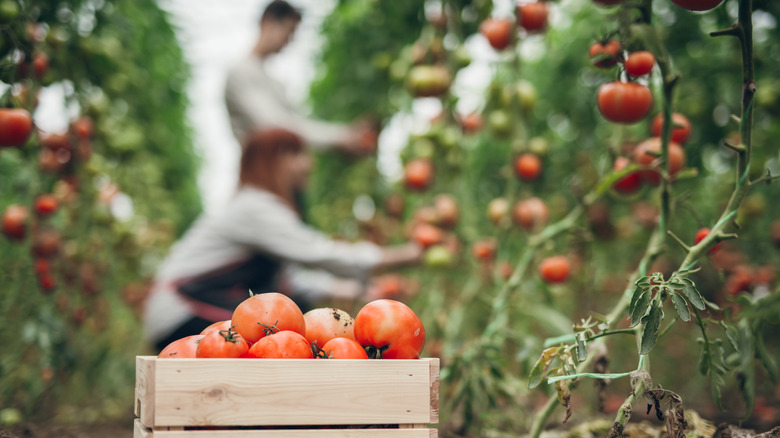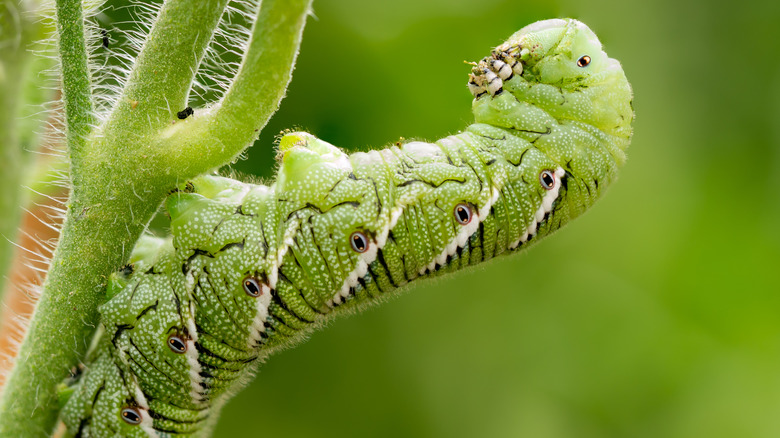It's A Terrible Idea To Plant Tomatoes Next To Corn In Your Garden - Here's Why
While not growing the right plants together isn't one of the mistakes beginner gardeners make way too often, it's still a problem. Certain plants don't do well with others, killing or slowing the growth of each other if planted too close in the garden. Tomatoes are one of those rather finicky plants that don't do well with a few other species. While these red fruits can handle being close to marigolds, basil, zinnias, oregano, radishes, cilantro, and beans, many other big producing plants cause problems. For example, you want to keep dill, fennel, broccoli, eggplants, and even walnuts far away from your tomatoes.
One veggie you might expect them to grow next to is corn. After all, the two go well together in many dishes, including soups, salads, salsas, and more. However, though in the culinary world they shine as a pair, as growing partners, they don't do as well together. If you're looking to have these two in your garden in the same year, you need to carefully consider where to place them so they don't cause any problems.
Corn and tomatoes are both rather large plants that take up a lot of nutrients, and you might think this is why they shouldn't be grown together. While the nourishment found in the soil can be a small problem if you don't plan ahead, it's not the main reason they need to be kept separate. In fact, it boils down to a problem you're likely already used to in your garden; pests.
How pests stop gardeners from growing corn and tomatoes together
Interestingly, tomatoes and corn can't be placed next to each other for a rather unique reason. Tomatoes and potatoes can't grow together because they compete for nutrients, and other plants may fight for space as well. With tomatoes and corn, however, it's because they have a bad habit of attracting the same pests and fungi. For example, the tomato hornworm definitely likes the red fruit that gave this pest its common name, but it also enjoys corn. In fact, the caterpillar is actually the larval stage of Helicoverpa zea, and it loves both so much that two of its common names are tomato hornworm and corn earworm.
These caterpillars will eat through leaves, stems, fruits, flowers, and kernels, leading to poor development and a lack of produce. When these two plants are grown close together, the moth is likely to lay eggs on both, or the caterpillars can easily travel from one plant to the other, and enjoy eating on them equally.
To try and control this bug, it's best to separate your corn and tomatoes, growing them as far apart as possible. By having these two plants together, you're more likely to attract pests to your garden, and to quickly lose both due to an infestation. Furthermore, you may want to take extra steps to keep away insects, such as using plants that naturally repel pests from your garden.

